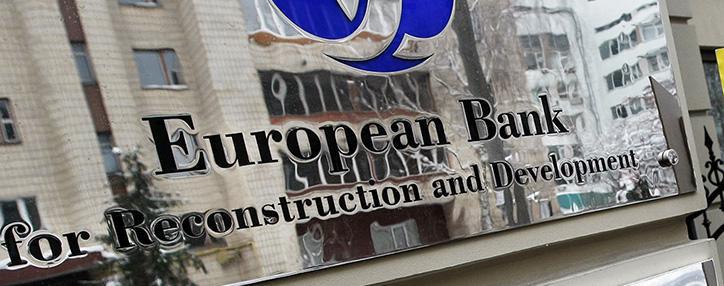EBRD leaves its 2016 Armenia GDP growth forecast unchanged at 2 per cent
12.05.2016,
18:15
Armenian economy grew by close to 3 per cent in 2015 despite economic spill-overs from Russia, regional currency adjustments and lower remittances, according to Regional Economic Prospects in EBRD Countries of Operations May 2016 report.

YEREVAN, May 12. /ARKA/. Armenian economy grew by close to 3 per cent in 2015 despite economic spill-overs from Russia, regional currency adjustments and lower remittances, according to Regional Economic Prospects in EBRD Countries of Operations May 2016 report.
The report says growth in 2015 was supported by a positive contribution from agriculture and mining and was driven by government consumption and an improvement in net exports. However, gross capital formation and household consumption decreased. Inflation has been contained by the stability of the dram, a tight monetary policy and low commodity import prices. The dram-US$ exchange rate has been predominantly stable on the back of central bank interventions early in 2015 and, more recently, the large adjustment of the current account.
Gross international reserves were at close to four months of imports in the first quarter of 2016, helped by the issuance of a sovereign Eurobond in March 2015. Public finances remained generally sound, although fiscal space is limited, as general government gross debt is expected to increase to close to 50 per cent of GDP in 2016.
Growth and currency stability in the first quarter of 2016 were helped by positive dynamics in industry, agriculture and services, and an increase in exports and fall in imports. The banking sector loan book remained flat in line with a consolidation in the financial sector. The conflict in the Nagorno-Karabakh region represents a risk to the growth outlook. The EBRD has left its 2016 Armenia GDP growth forecast unchanged at 2 per cent and is forecasting growth of 2 per cent for 2017.
The Armenian government’s growth forecast for 2016 is 2.2%. The World Bank and IMF have predicted a 1.9% growth for 2016.
The EBRD report says also weak commodity prices and recession in Russia are continuing to put pressure on the economies of Central Asia and Eastern Europe and the Caucasus. A key factor is lower remittances from Russia.
In Russia, recession is expected to continue in 2016, with low oil prices and a reduced availability of investment funding leading to a contraction of 1.2 per cent in 2016. Modest growth of 1 per cent is expected in 2017.
The impact of Russia as well as low commodity prices will continue to weigh on growth in Central Asia where growth forecasts have been mostly cut back. The countries with the strongest economic links to Russia are being particularly negatively affected. -0-
The report says growth in 2015 was supported by a positive contribution from agriculture and mining and was driven by government consumption and an improvement in net exports. However, gross capital formation and household consumption decreased. Inflation has been contained by the stability of the dram, a tight monetary policy and low commodity import prices. The dram-US$ exchange rate has been predominantly stable on the back of central bank interventions early in 2015 and, more recently, the large adjustment of the current account.
Gross international reserves were at close to four months of imports in the first quarter of 2016, helped by the issuance of a sovereign Eurobond in March 2015. Public finances remained generally sound, although fiscal space is limited, as general government gross debt is expected to increase to close to 50 per cent of GDP in 2016.
Growth and currency stability in the first quarter of 2016 were helped by positive dynamics in industry, agriculture and services, and an increase in exports and fall in imports. The banking sector loan book remained flat in line with a consolidation in the financial sector. The conflict in the Nagorno-Karabakh region represents a risk to the growth outlook. The EBRD has left its 2016 Armenia GDP growth forecast unchanged at 2 per cent and is forecasting growth of 2 per cent for 2017.
The Armenian government’s growth forecast for 2016 is 2.2%. The World Bank and IMF have predicted a 1.9% growth for 2016.
The EBRD report says also weak commodity prices and recession in Russia are continuing to put pressure on the economies of Central Asia and Eastern Europe and the Caucasus. A key factor is lower remittances from Russia.
In Russia, recession is expected to continue in 2016, with low oil prices and a reduced availability of investment funding leading to a contraction of 1.2 per cent in 2016. Modest growth of 1 per cent is expected in 2017.
The impact of Russia as well as low commodity prices will continue to weigh on growth in Central Asia where growth forecasts have been mostly cut back. The countries with the strongest economic links to Russia are being particularly negatively affected. -0-



